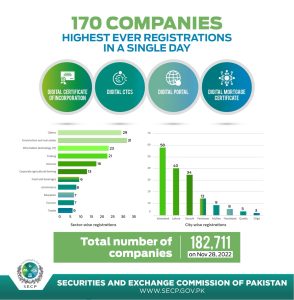Do you know Digital Lending Companies Should Be Avoided: SECP? Before registering for loans through these digital apps, the Securities and Exchange Commission of Pakistan (SECP) has recommended borrowers to carefully read through all of the terms and conditions of the loans, including interest/markup rate, services fees, and late payment charges/penalties.
Licensed Non-Banking Finance Companies (NBFCs) are liable to legal action if any applicable standards are broken or borrowers are given inaccurate or misleading information, according to sources who spoke to ProPakistani. If a borrower’s complaint isn’t addressed by the appropriate NBFC, they can file a complaint with SECP through the organization’s Service Desk Management System.
Read More: Samsung Demonstrates Sci Fi Displays at CES 2023
Best Digital Lending Platforms

Although NBFCs’ online lending platforms provide rapid, unsecured small-ticket loans to borrowers and may serve as a source of credit for otherwise underserved or unserved strata, they said that because these loans are unsecured, the interest rates they charge can be proportionately extremely high.
The goal of the digital lending framework is to streamline the lending process, safeguard customers from dishonest loan recovery tactics, and enable borrowers to make fully transparent decisions. This structure will not only deter uncertainty and unethical behaviour, but it will also motivate the sincere participants to engage in lending responsibly, promoting trust and, ultimately, the sector’s expansion.
The new requirements for digital lending apply to NBFCs that conduct lending through digital channels or mobile applications (Apps). The specifications outline the minimal mandatory disclosures to be made to customers at all times following the download of a digital app and before to signing a loan agreement.
Before the borrower enters into a loan agreement, the disclosures include information about how the App will access user data during the App registration process, as well as the privacy policy, mark-up rate, financing details, fee and charge information, early settlement charges, and contact information.
Before the loan is disbursed to the borrower, significant information must be disclosed in the form of a Key Fact Statement (KFS), including the loan amount approved, cooling-off period, annual percentage rates, the length of the loan, instalment or lump sum payment amounts with date(s), and all fees and charges, including processing fees, late payment penalties, and per-day late payment penalties.
best private lending companies

According to officials, digital lenders are not allowed to deduct the approved loan amount in advance for any reason (first instalment, fees, charges, etc.).
Similar to this, the terms and conditions that were agreed upon by the borrower and the digital lender at the time the loan was granted, together with the annual percentage rate, may not be amended later without the borrower’s prior approval, including an automatic increase in credit limit. Additionally, only the bank account or branchless banking accounts of the digital lender may be used for disbursement and recovery, and the borrower’s bank account or branchless banking account must be used for disbursement.
The borrowers must agree to all of the underlying terms and conditions before a digital loan can be disbursed. Upon completion of the loan contract, the digital lender shall guarantee that the borrower receives a loan sanction letter, terms and conditions, account statements, and privacy rules with regard to the borrower’s data through email or SMS.
In addition to the current NBFC grievance redressal framework, the Commission has additionally outlined a thorough grievance redressal procedure with detailed monthly reporting.
The licenced digital lender shall be required to disclose its full corporate name and licencing status (including licence number) on its lending platform(s)/app(s), documentation, materials, and advertisements in order to deter non-licensed digital lenders. The licenced digital lender shall also provide its licence status, along with approval granted by the Commission for respective App to Google Play Store and/or App Store.
The Digital Lender must regularly update the material on its website about its loan products, including the full terms and conditions.
Any publication or advertisement must be truthful, reasonable, and free of misinformation. Additionally, the Digital Lenders shall create an internal mechanism to monitor the overall exposure of its borrowers by requiring an undertaking from borrowers regarding their current borrowing from all lenders, obtaining membership in CIBs, and ensuring regular/continuous reporting to all the credit bureaus operating in Pakistan on a real-time basis. These steps are necessary to prevent borrower over-indebtedness and manage credit risk.
Data protection and confidentiality are top priorities for the Commission’s digital lending framework, and it is now mandatory that data not be kept on any cloud infrastructure that is not under Pakistani law.
Additionally, data that is currently kept in cloud infrastructure, hosting, or data centres outside of Pakistan’s jurisdiction must be moved or transferred into Pakistan’s jurisdiction within the given time frame. Similar to this, even if the borrower has provided permission for this, digital lenders will not be given access to the borrower’s phone book, contacts list, or photo gallery.
Other than those who the borrower has specifically designated as guarantors and who have consented to be contacted by the lender, the lender shall not be permitted to contact any other individuals on the borrower’s contact list.



